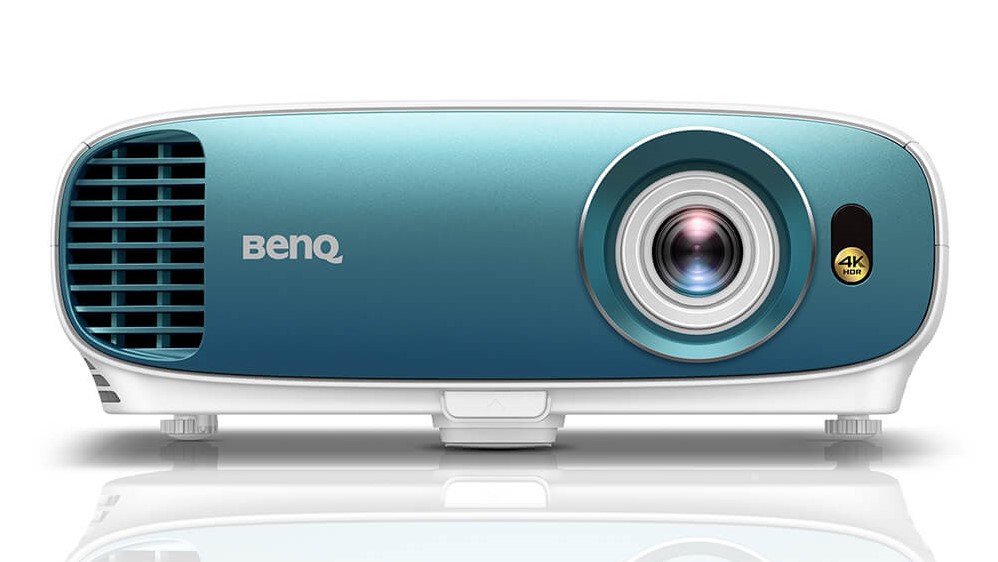TechRadar Verdict
The BenQ TK800 DLP 4K HDR projector has its limitations with black levels and shadow detail, but its bright, colorful and detailed images are hard to resist considering the price.
Pros
- +
Sharp 4K and HDR images
- +
Big, bright, colorful picture
- +
Excellent motion handing
- +
Good input lag for gaming
- +
Cracking price
Cons
- -
Poor black and shadow detail
- -
Light spillage
- -
Noisy even in Eco mode
- -
Color wheel can result in rainbows
Why you can trust TechRadar
When it comes to big screen entertainment, nothing delivers more bang for your buck than a projector. Unfortunately, though, most people haven't adopted projectors quite in the same way that they have with TVs – whether that's because they're scared about setup, concerned about performance or worried about price.
Thankfully, it doesn’t have to be like that. The BenQ TK800 is a great example of the form factor that delivers big screen action for those on a budget, producing an image up to 300” in size that it's as easy to setup as pointing it at a white wall. All you need is a soundbar for the audio and you’re good to go.
A large screen TV can cost considerably more, and still won’t be capable of an image as large as that produced by a projector. But the TK800 can do more than simply deliver a 4K image: it also supports High Dynamic Range, making it ideal for a movie session, immersive gaming, or even watching the big match.
Can BenQ replace the big-screen TV? For some folks, absolutely.
- What are the best projectors out there?
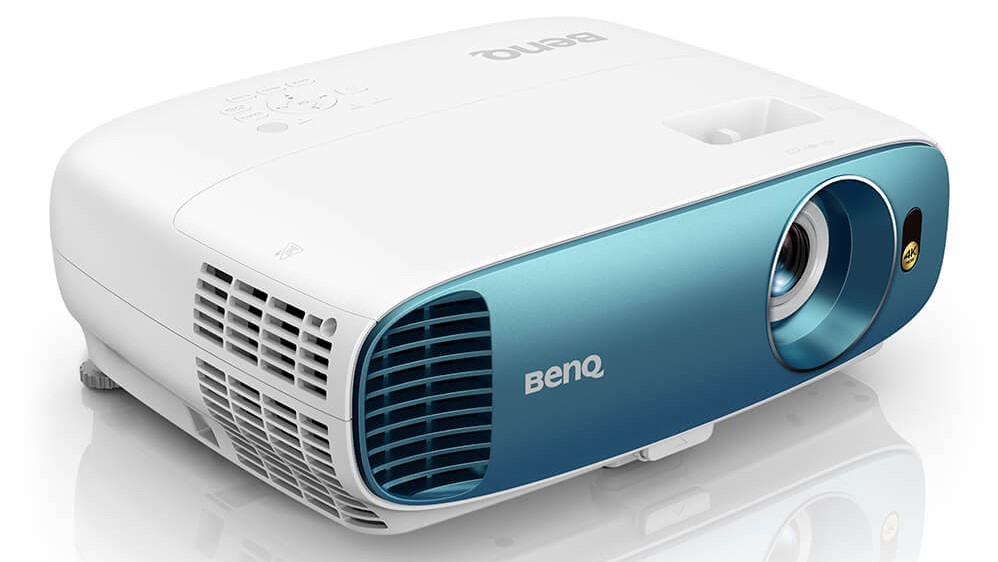
Design
In terms of design, the BenQ TK800 looks like a typical single-chip DLP projector, with a lens off-set to the right as you face the front, and an air vent over on the left. The chassis is composed of hardened plastic, and it feels solidly constructed: meaning you can move it around without worrying that it will suddenly fall apart. The unit is white, with an aqua blue finish to the front that makes the TK800 more eye-catching than much of the competition.
There’s a remote sensor to the right of the lens, and above it is a recessed area where you’ll find manual zoom and focus controls. There’s no lens shift, but there is an extendable foot at the front of the projector, towards the bottom. This allows you to adjust the height of the image, although this can introduce keystone distortions. Thankfully the TK800 has auto-correction, making it easy to install and allowing for a quick set up whenever you fancy some big screen action.
There’s a typical set of connections at the rear, that includes two HDMI inputs: the first is HDCP 2.2 compliant and should be used for any 4K/HDR sources, while the second is HDCP 1.4 and can be used for high definition. There’s also a PC/VGA input, an analogue audio in and out, a 12V trigger, an RS232 serial connector, and two USB ports. In the case of the latter, the first is for service updates, while the second can be used to power other devices.
There are some basic controls on a panel at the top rear of the projector, but the main method of setting up and operating the TK800 is the included remote. This small white controller is well made, sensibly laid out, and crucially it has a backlight which means you can use it in the dark. All the main buttons are within easy reach of your thumb, and overall this is a very effective remote.
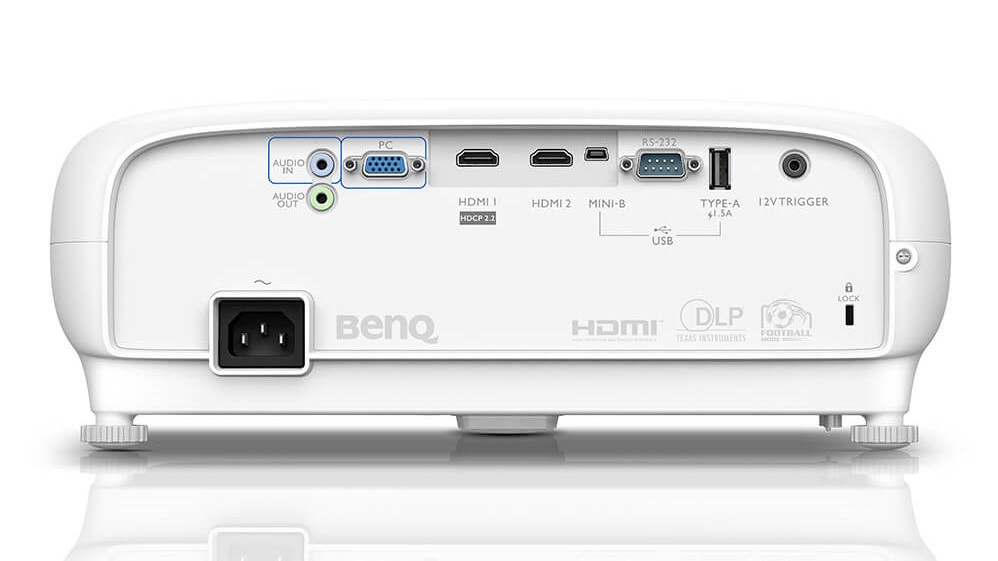
Features
The main selling point of the BenQ TK800 is that it supports 4K and while this is true, it’s worth pointing out that the projector’s DLP chip is not 3840x2160 pixels. It uses XPR technology, which essentially takes a 1920x1080 pixel DLP chip and flashes the image four times in incredibly fast succession to create an image with a perceived resolution of over eight million pixels. Amazingly this actually works, and even with test patterns the images appear to be 4K in terms of resolution.
The TK800 has an optical system designed for 4K resolution, which means it uses high-grade glass for superior image quality. A precision seven-element, four-group lens array allows for greater light penetration at higher resolutions, and a low-dispersion lens coating minimizes chromatic aberrations and allows for improved clarity.
The sharpness of the image is undoubtedly helped by the single chip nature of this projector, which means there are none of the alignment issues found on three-chip machines. However that does mean that the TK800 has to use a color wheel, and this can result in rainbows for certain people who are susceptible to the effect.
It also means that the color range of the TK800 won’t be as wide as projectors that don’t require a color wheel. However BenQ’s innovative new 4K color wheel is designed to deliver 92% of the Rec.709 color space with improved precision. In addition the projector’s 120 Hz refresh rate is intended to eliminate image blur, and as a result images are both accurate and bright.
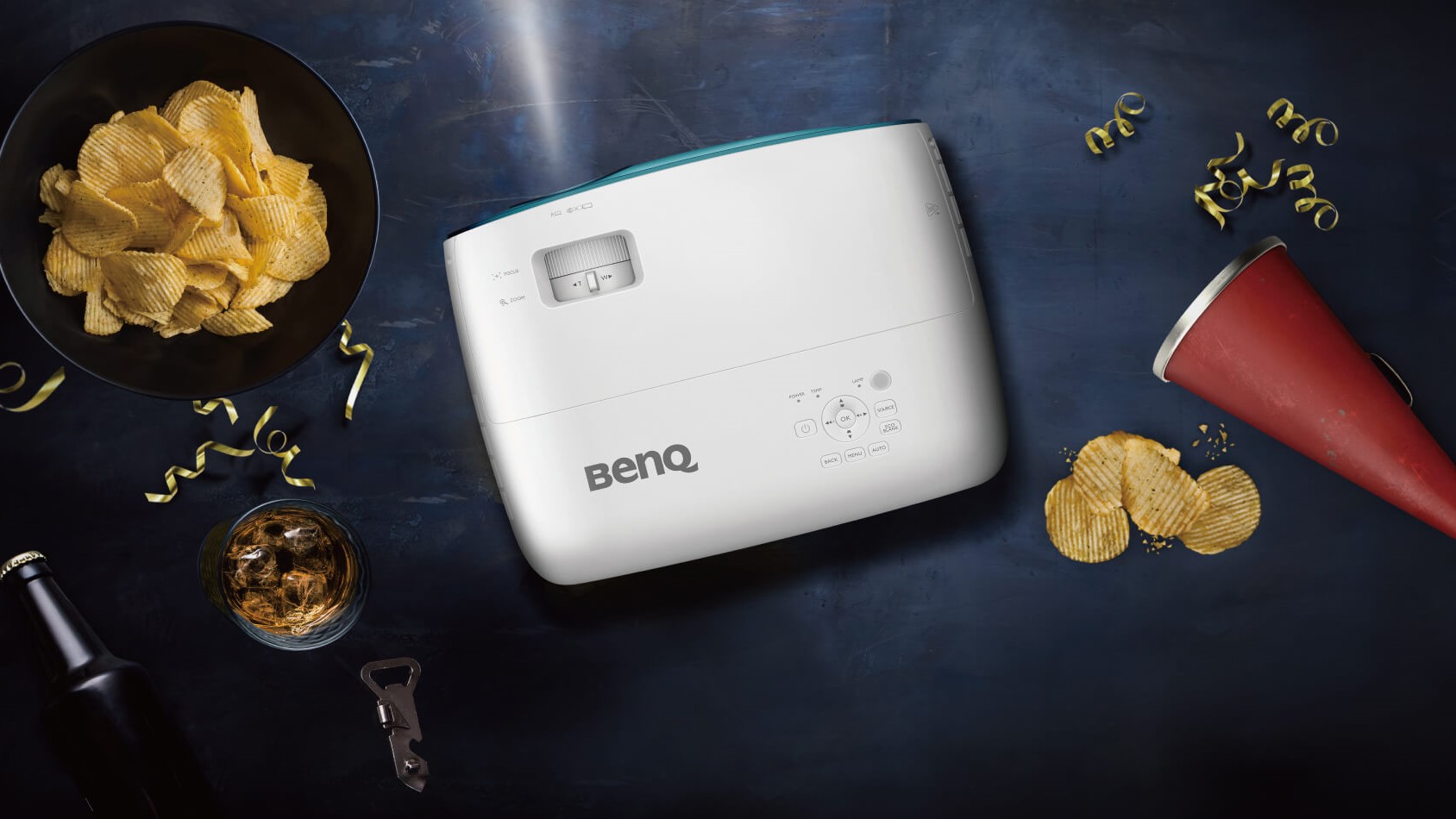
The TK800 is certainly bright, with BenQ claiming the projector can deliver a maximum of 3000 lumens. That makes it ideal for rooms with white walls or a lot of ambient light, allowing you to invite your friends around for the big game without having to worry about plunging the lounge into pitch blackness in order to see the projected image.
The other big feature is support for High Dynamic Range, specifically HDR10. Thanks to BenQ’s Auto HDR Colour Rendition technology, the TK800 can deliver HDR with greater brightness and contrast range than SDR. There are also image optimisation features designed to bring out all the detail in a 4K source.
In recognition of the TK800’s target market, BenQ has included game and football picture modes. The former is definitely useful, reducing the input lag and delivering a more responsive gaming experience. The latter is less successful, boosting the colours and the processing, resulting in an image that appears too artificial.
Finally there are speakers and 5W of amplification built into the TK800, but we’d definitely recommend using a soundbar or better still an AV receiver and speaker package, to ensure you have a big soundstage to go with your equally big image.
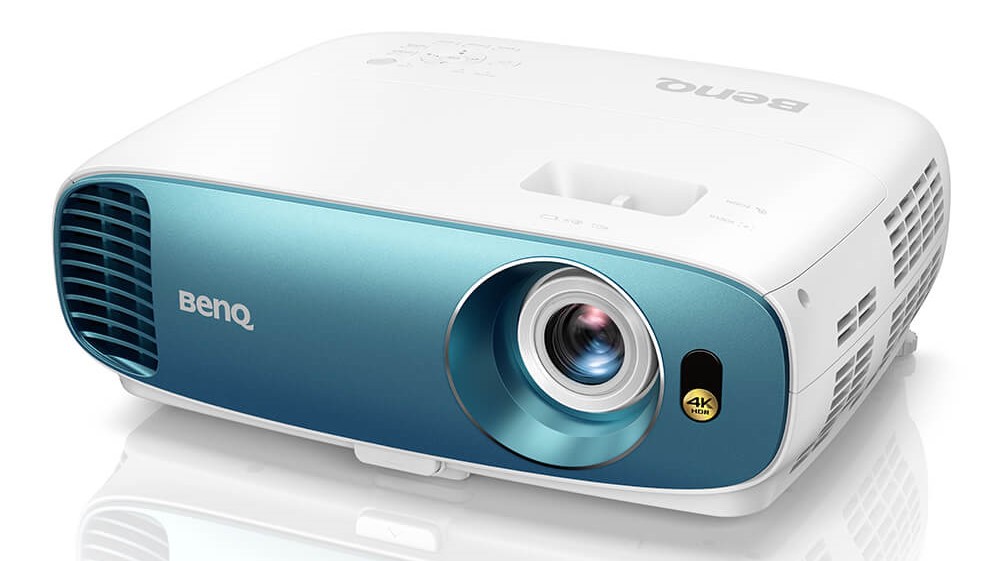
Performance
The first thing we noticed when watching 4K content on the BenQ TK800 was how much detail there was in the image. The projector might be applying some visual trickery to get the perceived resolution up to the required eight million pixels, but it definitely works. If we put on the Ultra HD Blu-ray of The Revenant, the image was incredibly detailed and the brightness really lent itself to the snowy landscapes.
A superb 4K disc like Planet Earth II was equally as impressive, bursting with fine detail, bright highlights, and natural colors. We could tell from testing the TK800 that the color wheel did limit the range of colors that it could deliver, but BenQ have done a good job of mapping HDR content to the projector’s native capabilities. Stick on Guardians of the Galaxy Vol.2, and the film’s riot of color is well represented.
It doesn't hurt that the projector is really bright, which means that even with SDR content it can deliver images that have genuine impact, even in less-than-ideal conditions. As such you can use the TK800 in a room with white walls or big windows, and still enjoy a huge projected image.
In fact we’d go as far as to say that the BenQ is best suited to rooms with light colored walls because when we actually installed the projector in our dedicated home cinema, problems with light spill were more obvious. There was light from the bulb escaping through the air vents in the chassis, and we could now see a lighter area around the edges of image.

The one area where DLP struggles is in terms of black levels and shadow detail, both of which are poor. The blacks were more of a dark grey, while there was little detail in the shadows. However given that the TK800 is best suited to rooms with a lot of ambient light, these particular issues will be less noticeable.
What what you’re more likely to notice is the fan noise which, when combined with the sound of the colour wheel whizzing around, can get quite loud. There’s no way around this: the brighter the bulb, the more heat it produces, and the more cooling is required.
The TK800 has speakers built-in but they are woefully inadequate, especially when you consider the fan noise. Let’s be honest: if you’re projecting a big Hollywood blockbuster like Guardians of the Galaxy then you want an equally big sound to go with it. So we’d recommend investing in a good soundbar like the Samsung HW-N950, which can deliver an immersive audio experience worthy of the big screen.
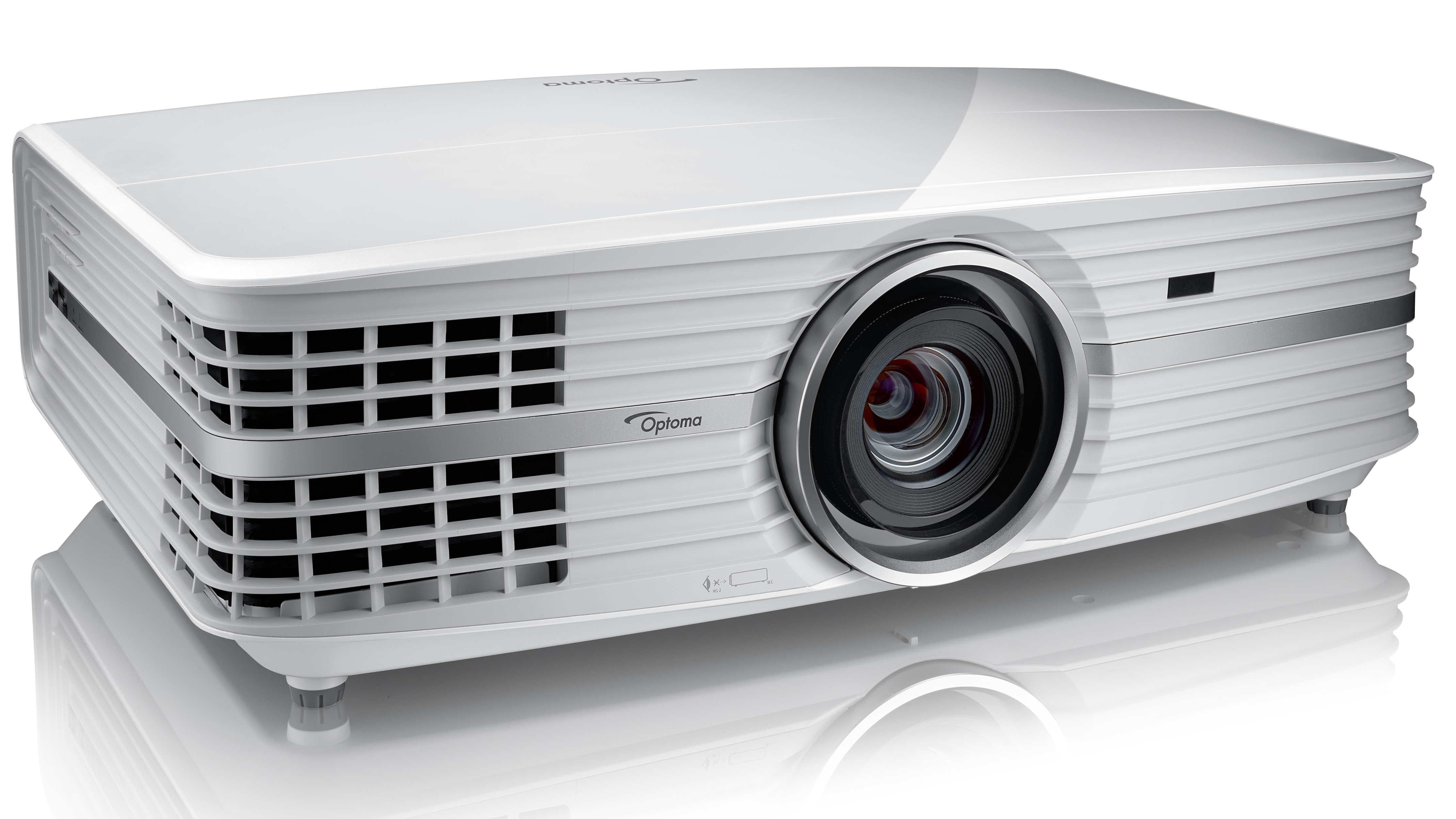
Other projectors to ponder...
The budget end of the projector market is highly competitive, with single-chip DLP machines available from the likes of Optoma, Vivitech, and others. These all tend to look very similar with almost identical features, but despite this the BenQ TK800 offers a lot for just $1,249 (£999, AU$1,989), making it hard to beat.
The Vivitek HK2288 is an example of a single-chip DLP projector that offers a similar design and an almost identical set of features. However it uses a larger imaging chip for a slightly better 4K experience, but also costs more, which gives you an idea of the competitiveness of the TK800.
Another alternative is the Optoma UHD60 which, like thBenQ, uses the same approach to create its 4K images and also supports HDR. This single-chip DLP projector boasts almost exactly the same features as the TK800 but way more expensive, thus proving once again that the BenQ really is a great value proposition.
Verdict
The BenQ TK800 is well-made, has all the connections you’ll need, and sports a solid set of features. It’s easy to set up and simple to operate, making it ideal for periodic use. You’ll get the best image using an actual screen, but a white wall will suffice.
Despite not actually using a native 4K panel it’s still capable of highly detailed images, and is also very bright – making it perfect for less than ideal conditions such as a room with white walls or big windows. Also expect excellent motion handling, which is great for gaming, and it has a low input lag which is also good news for gamers. (The BenQ even supports 3D, although you will need to buy the glasses separately.)
On the debit side, the black level and the shadow detail are both poor, but that will be less of an issue in a room with ambient light. The TK800 also uses a color wheel, which restricts its range of colors, especially where HDR is concerned. It also means that certain people will see ‘rainbows’, but that’s just a limitation of single-chip DLP projectors. On top of all that, it's quite noisy thanks to both the color wheel and a fan, although the latter is necessary given the amount of heat generated by the bright bulb.
Despite a few negative attributes, the BenQ TK800 is a cracking projector that delivers enjoyable big screen action for those on a limited budget.
- Expect to see this on our list of the best projectors

Stephen is a freelance reviewer with over ten years experience writing for all the major tech publications. As a lifelong film fan he’s embraced the evolution of home entertainment over the decades, and as a professional audio and video calibrator he’s able to keep abreast of the latest developments and innovations. When not reviewing the latest products, Stephen can be found obsessing over how to cram a bigger screen and more speakers into his own home cinema.
